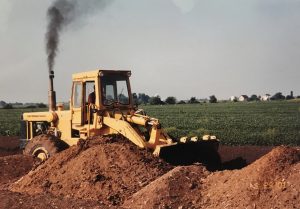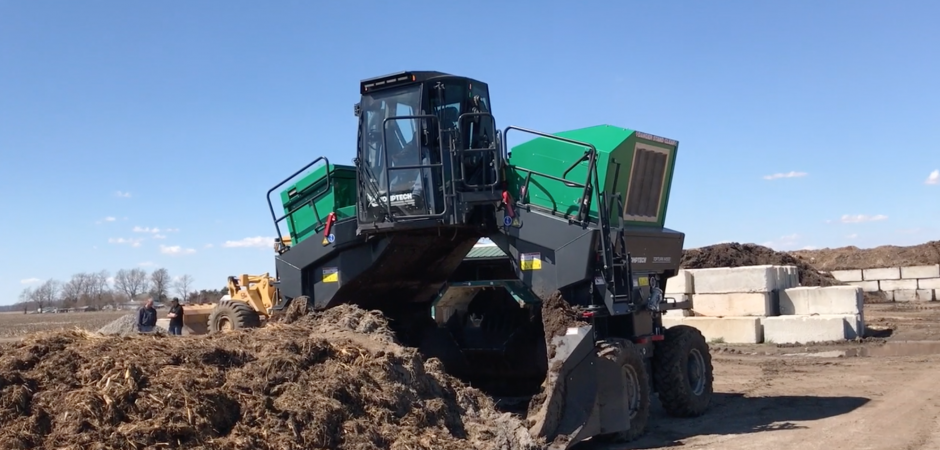The New Compost Turner on the Farm!
In the early 90s we began to consider the idea of using compost practices on our farm. At the time this was a very forward thinking practice to enhance land production. We entered an agreement with Perdue Farms to process their turkey litter from nearby locations in order to develop a compost mix. This idea and decision began the journey we are now on today!
Compost can add very essential benefits to the soil through additional nutrients and microbial activity. The basics of what compost is made up of can be anywhere from food waste to livestock manure. The more diverse the mix of waste, the better the compost! All the nutrients and living organisms through this excess waste can be used to regenerate soil activity back onto farm ground. Through a compost operation there is one key practice done- it has to be turned! This means that the compost pile is stirred up or flipped over to create the right structure.
Why does the turning process matter?
It is important that the compost windrows have continual movement for a few reasons. First it is necessary for the compost to get aerated so that the microorganisms can have oxygen to function and continually break down excess waste. Another reason to aerate the compost is to lessen the amount of moisture standing. When the compost sits for a long time, the pockets of air will then be filled with water which can change the texture. Managing temperature is an essential part of making the right compost mix as well. The sweet spot to turn windrows is anywhere from 130-160 degrees, anything below 130 could allow pathogens to survive and anything over 160 could kill off beneficial microorganisms. The process of turning compost and having the right amount of diverse materials is truly what makes a nutrient-rich mixture to apply onto our farm ground.
When we first began making our own windrows and experimenting the process of compost we used a pay loader to turn the rows. The pay loader worked for awhile but it wasn’t able to do the job to the best ability. This was the beginning of an exciting journey of figuring out the right equipment and process to make the most out of our compost. In the early years we had a desire to expand but couldn’t seem to justify the cost of an actual compost turner. In 2001 we received grant funds through Farm Bureau and the Indiana Department of Environmental Management to get a new compost turner and expand our capabilities. Through increasing our capacity, we were able to turn and apply more compost on our fields as well as for other customers for gardens.
As 18 years have passed we have continually saw how important this practice is on our fields for additional productivity of our soils. Through much prayer and discussion, we decided to expand our compost operation to the best of its ability which meant we needed a larger turner.
Why is a larger compost turner necessary?
This will allow us to continue to increase our capacity and produce larger windrows closer together. By doing this we will be able to accept larger amounts of waste materials and potentially add more biodiversity into the mix. This practice alleviates stresses to the environment through diverting waste from landfills and reducing runoff of manure into streams. We are also adding “compostable plastics” to the mix to help with the purchase as well. This could potentially add another way to incorporate environmentally sustaining practices on the farm.
In the process of a year we were able to receive a grant through IDEM for a Komptech compost turner. After much anticipation and excitement, the new compost turner was delivered to our farm a few weeks ago!
The original pay loader we used to turn compost windrows from the early 90s until 2001. We were sure glad to have an upgrade!


The compost turner we had used from 2001-2019 through a grant from Farm Bureau and IDEM


